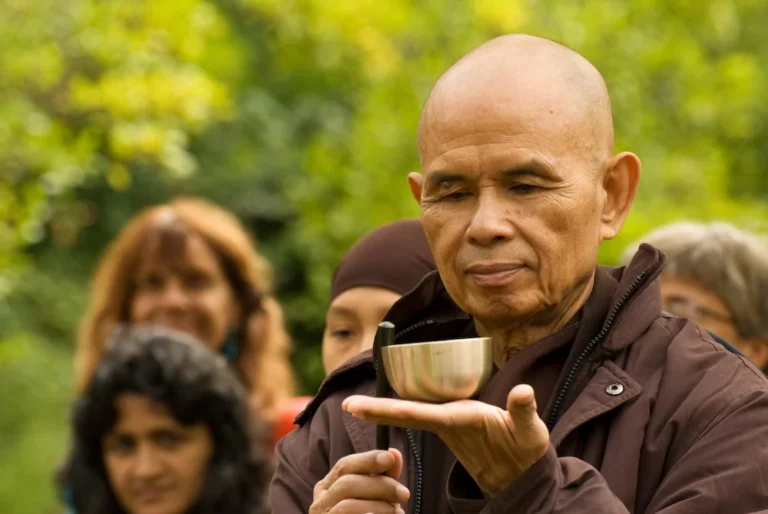I recently revisited two classics by peace activist and Zen monk Thich Nhat Hanh—books that return, again and again, to a simple idea: cultivate mindfulness in everyday life and you become more fully alive. His pages read like gentle invitations back to the present moment.
A life of engaged Buddhism
Thich Nhat Hanh became a novice monk in Vietnam in 1942 at the age of sixteen. During the war he helped shape “engaged Buddhism,” inspired in part by Gandhi—leaving the monastery to meet the needs of people displaced by violence. His peace work later brought him to the United States, where his message of compassion influenced many, including Martin Luther King Jr., who publicly supported his call for peace.
Happiness is a breath away
The thrust of his teaching is beautifully simple: when we become aware of the present moment—our breath, our steps, the person in front of us—we touch what we’ve been chasing. Happiness, he reminds us, is always as near as the next in-breath. For readers who like data along with dharma, there’s growing evidence that mindfulness supports mental well-being, resilience, and kinder relationships.
Why this matters (especially for high achievers)
As a psychotherapist, I often meet men who are constantly “running”: graduate, get the promotion, make the first million—then happiness. Thich Nhat Hanh flips that script. We don’t arrive at happiness by sprinting toward the future; we practice it “here and now.” That practice also counters the emotional distance that so often creeps into modern life, at work and at home, by guiding us back to presence and connection—today, not “after everything settles down.” If you’re exploring the science of flourishing, you might also like our reflections about happiness.
Try this today
- One mindful minute. Pause and feel five slow breaths: in—“I am here”; out—“I am home.” Notice the belly rise and fall.
- Walking as practice. Choose a doorway or hallway as your “bell of mindfulness.” Each time you pass, soften your shoulders and take one conscious step.
- Offer loving-kindness. Silently repeat: “May I be safe. May you be well. May we live with ease.” Let it be warm rather than perfect.
- Make it practical. If you’re new to meditation, start with a simple, no-jargon routine here: How to meditate – a simple meditation technique.
For an evidence-based overview of benefits and safety, see the National Institutes of Health’s guide from the National Center for Complementary and Integrative Health (NIH: Meditation & Mindfulness).
Recommended reading
- The Miracle of Mindfulness — a pocket guide to bringing awareness into daily life.
- Peace Is Every Step — short practices for breathing, walking, and living with compassion.
A different way to be strong
Men are often stereotyped as striving, hardened, or aggressive. Thich Nhat Hanh offers another template for strength: to live in peace with oneself and one’s world, moment by moment. Practice a little every day and let your life be the proof.

